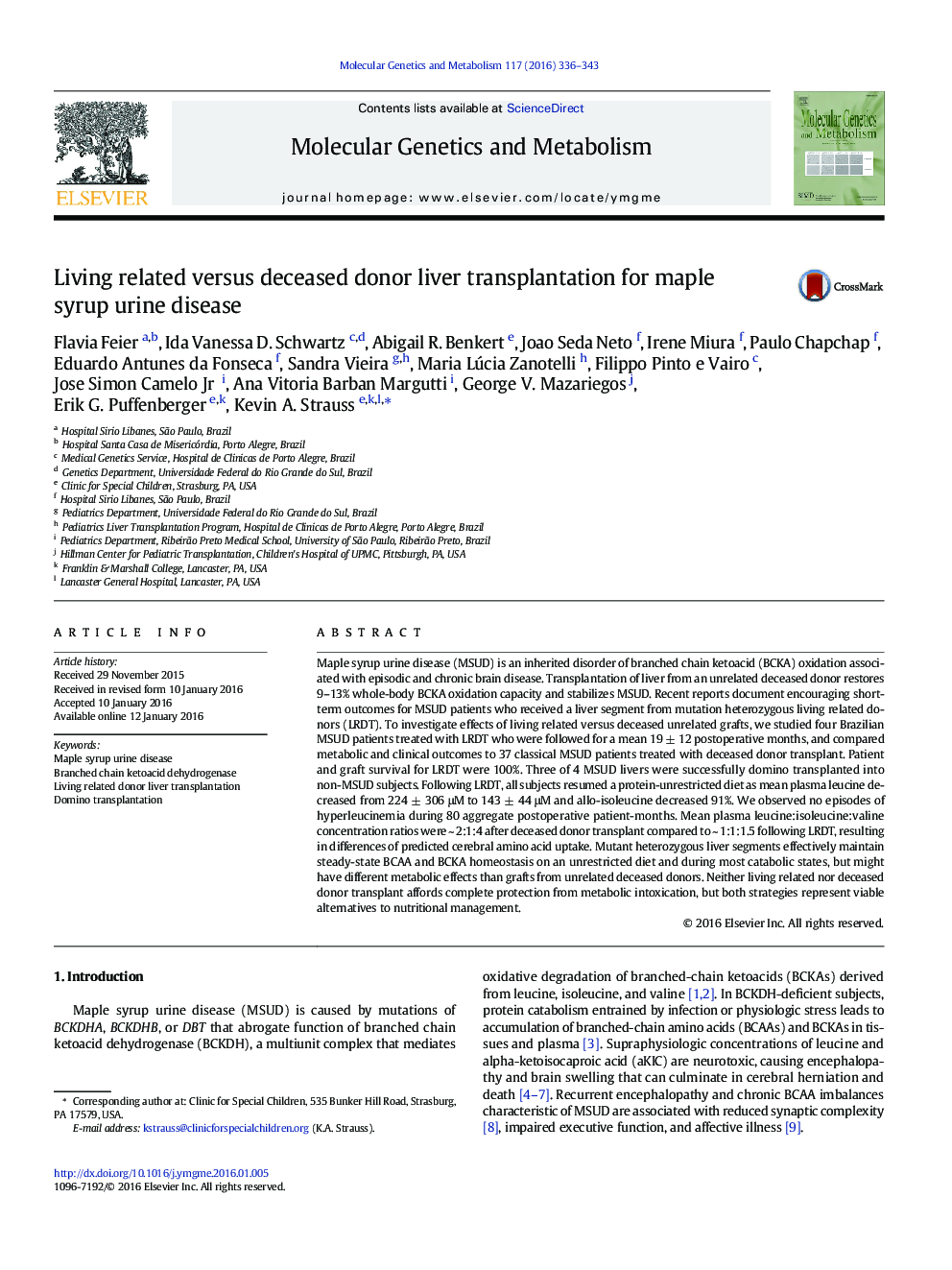| کد مقاله | کد نشریه | سال انتشار | مقاله انگلیسی | نسخه تمام متن |
|---|---|---|---|---|
| 10832581 | 1065771 | 2016 | 8 صفحه PDF | دانلود رایگان |
عنوان انگلیسی مقاله ISI
Living related versus deceased donor liver transplantation for maple syrup urine disease
ترجمه فارسی عنوان
پیوند کبدی اهدا همراه با مرگ ناشی از بیماری ادرار شربت افرا است
دانلود مقاله + سفارش ترجمه
دانلود مقاله ISI انگلیسی
رایگان برای ایرانیان
کلمات کلیدی
بیماری ادرار شربت افرا، کتوکاید دهیدروژناز زنجیره شاخه ای، پیوند کبد اهدا کننده مرتبط با زندگی، پیوند دومینو،
موضوعات مرتبط
علوم زیستی و بیوفناوری
بیوشیمی، ژنتیک و زیست شناسی مولکولی
زیست شیمی
چکیده انگلیسی
Maple syrup urine disease (MSUD) is an inherited disorder of branched chain ketoacid (BCKA) oxidation associated with episodic and chronic brain disease. Transplantation of liver from an unrelated deceased donor restores 9-13% whole-body BCKA oxidation capacity and stabilizes MSUD. Recent reports document encouraging short-term outcomes for MSUD patients who received a liver segment from mutation heterozygous living related donors (LRDT). To investigate effects of living related versus deceased unrelated grafts, we studied four Brazilian MSUD patients treated with LRDT who were followed for a mean 19 ± 12 postoperative months, and compared metabolic and clinical outcomes to 37 classical MSUD patients treated with deceased donor transplant. Patient and graft survival for LRDT were 100%. Three of 4 MSUD livers were successfully domino transplanted into non-MSUD subjects. Following LRDT, all subjects resumed a protein-unrestricted diet as mean plasma leucine decreased from 224 ± 306 μM to 143 ± 44 μM and allo-isoleucine decreased 91%. We observed no episodes of hyperleucinemia during 80 aggregate postoperative patient-months. Mean plasma leucine:isoleucine:valine concentration ratios were ~ 2:1:4 after deceased donor transplant compared to ~ 1:1:1.5 following LRDT, resulting in differences of predicted cerebral amino acid uptake. Mutant heterozygous liver segments effectively maintain steady-state BCAA and BCKA homeostasis on an unrestricted diet and during most catabolic states, but might have different metabolic effects than grafts from unrelated deceased donors. Neither living related nor deceased donor transplant affords complete protection from metabolic intoxication, but both strategies represent viable alternatives to nutritional management.
ناشر
Database: Elsevier - ScienceDirect (ساینس دایرکت)
Journal: Molecular Genetics and Metabolism - Volume 117, Issue 3, March 2016, Pages 336-343
Journal: Molecular Genetics and Metabolism - Volume 117, Issue 3, March 2016, Pages 336-343
نویسندگان
Flavia Feier, Ida Vanessa D. Schwartz, Abigail R. Benkert, Joao Seda Neto, Irene Miura, Paulo Chapchap, Eduardo Antunes da Fonseca, Sandra Vieira, Maria Lúcia Zanotelli, Filippo Pinto e Vairo, Jose Simon Jr, Ana Vitoria Barban Margutti,
